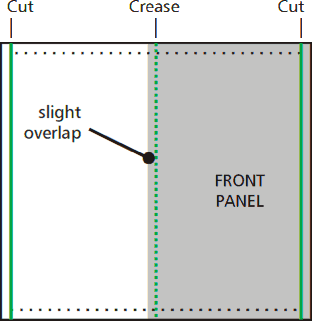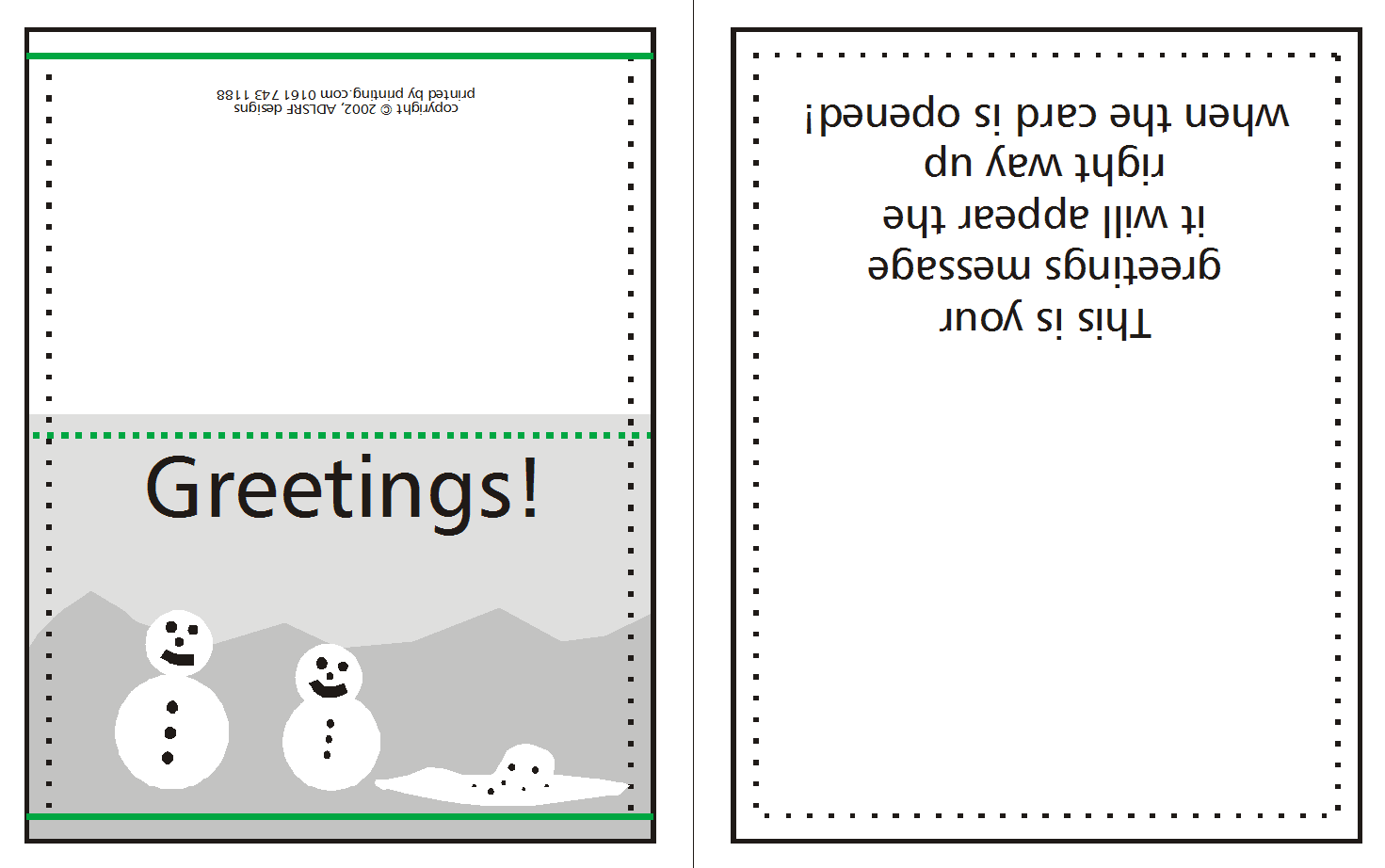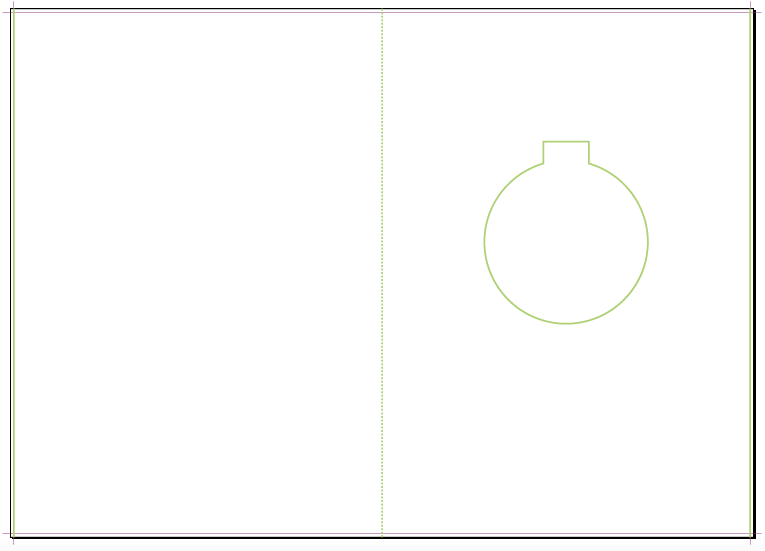Download the appropriate InDesign template to start your design from.
When supplying your files it's important to supply the first page of your PDF as the front/outside. This is the side we apply our Gloss Lamination to. Matt Lamination is applied to both sides as standard on our 400gsm stocks.
Our Spot UV, Foil and Windowed/Shaped cards are also supplied with the finish on page one of your PDF.
When designing greetings cards with a front panel background that should touch the fold, ensure that the picture overlaps the fold by 1mm.

This allows for production tolerances when creasing, and prevents a contrasting stripe (from the adjacent panel) showing on the front face of the finished card. Remember to manage your customer’s expectations that there may be part of the front design just visible on the back.
Folding products on heavy board (e.g. greetings cards, folding business cards, etc.) now contain die-cut lines to form the two cuts parallel to the centre crease. This should help the edges to meet up correctly when folded. Do not remove these lines.
When viewed flat, the inside artwork needs to read upside-down relative to the front.

Our Windowed Christmas Cards allow for a simple cut-out shape on the front panel.

Please see Die Cuts for more information.
Jump to contents page of
|
|||